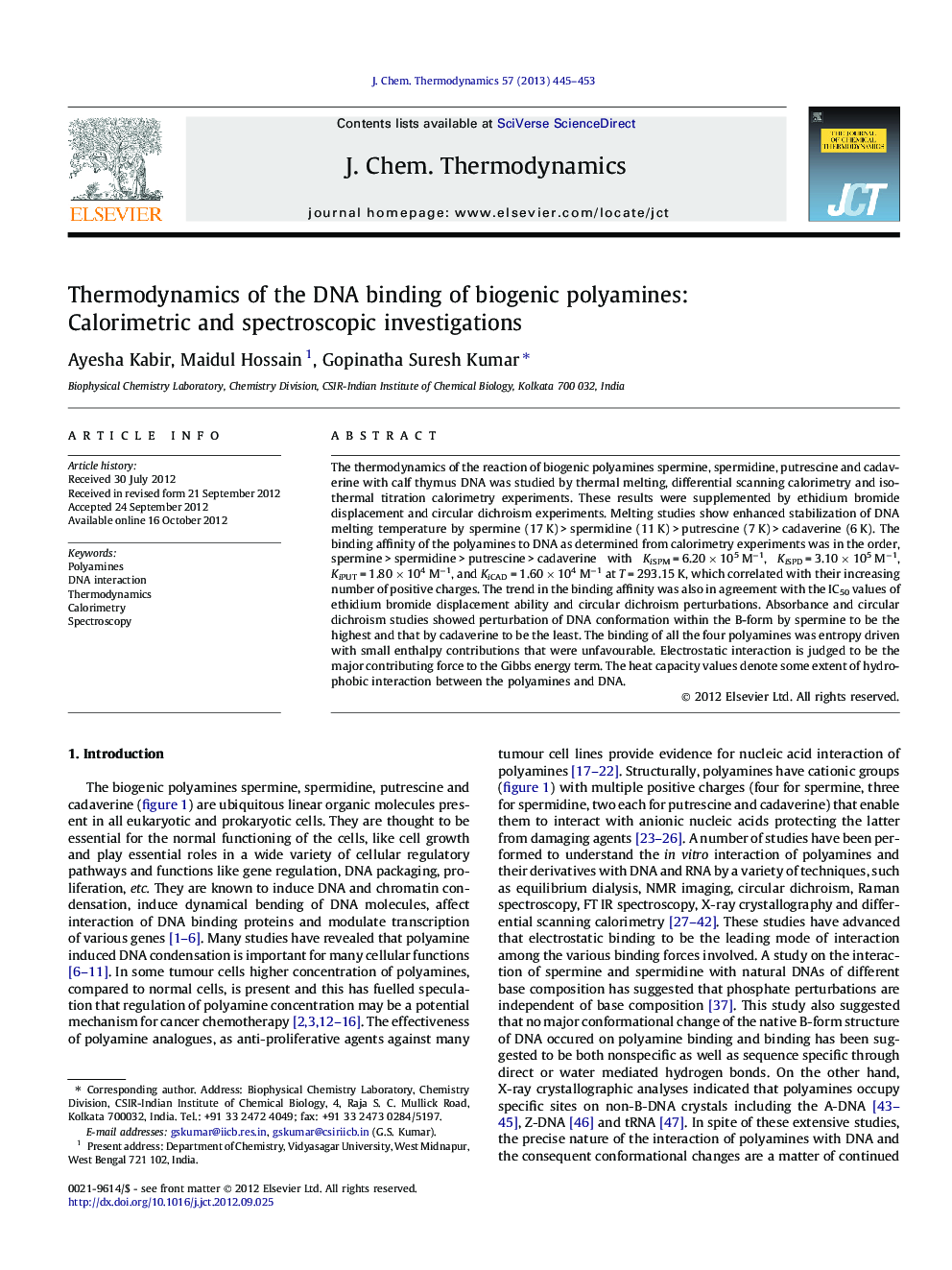| کد مقاله | کد نشریه | سال انتشار | مقاله انگلیسی | نسخه تمام متن |
|---|---|---|---|---|
| 215782 | 1426256 | 2013 | 9 صفحه PDF | دانلود رایگان |

The thermodynamics of the reaction of biogenic polyamines spermine, spermidine, putrescine and cadaverine with calf thymus DNA was studied by thermal melting, differential scanning calorimetry and isothermal titration calorimetry experiments. These results were supplemented by ethidium bromide displacement and circular dichroism experiments. Melting studies show enhanced stabilization of DNA melting temperature by spermine (17 K) > spermidine (11 K) > putrescine (7 K) > cadaverine (6 K). The binding affinity of the polyamines to DNA as determined from calorimetry experiments was in the order, spermine > spermidine > putrescine > cadaverine with KiSPM = 6.20 × 105 M−1, KiSPD = 3.10 × 105 M−1, KiPUT = 1.80 × 104 M−1, and KiCAD = 1.60 × 104 M−1 at T = 293.15 K, which correlated with their increasing number of positive charges. The trend in the binding affinity was also in agreement with the IC50 values of ethidium bromide displacement ability and circular dichroism perturbations. Absorbance and circular dichroism studies showed perturbation of DNA conformation within the B-form by spermine to be the highest and that by cadaverine to be the least. The binding of all the four polyamines was entropy driven with small enthalpy contributions that were unfavourable. Electrostatic interaction is judged to be the major contributing force to the Gibbs energy term. The heat capacity values denote some extent of hydrophobic interaction between the polyamines and DNA.
Figure optionsDownload as PowerPoint slideHighlights
► DNA binding of spermine > spermidine >> putrescine > cadaverine.
► Binding of the polyamines stabilized the DNA melting temperature by 6–17 K.
► Binding was entropy driven with small enthalpy contribution at all temperatures.
► Electrostatic interaction is the major contributing force to the Gibbs energy term.
► Small but negative heat capacity changes indicate the role of hydrophobic forces.
Journal: The Journal of Chemical Thermodynamics - Volume 57, February 2013, Pages 445–453